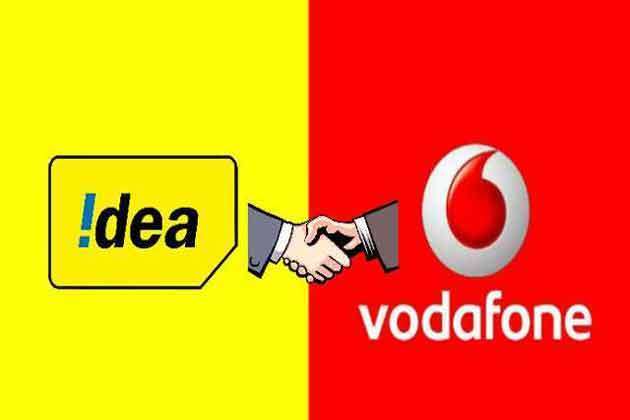This article is written by Bushra Tungekar from the University of Mumbai Law Academy. In his article, the author analyses the merger of the two largest players in the telecom industry in India.
Table of Contents
Introduction
Mergers and acquisitions have been proved to be an effective tool for the purpose of corporate restructuring activities. The telecommunication industry is one of the most profitable and rapidly developing industries. The Indian telecommunications industry is the world’s second-largest telecommunication industry. It has a subscriber base of 1183.51 million users, an internet subscriber base of 604.21 million, and the revenue generated by the telecom sector is around Rs 185,291 crore.
Mergers in the Indian telecom industry are not uncommon. The merger phenomenon has grown in the industry since the past few decades. The famous mergers seen in the industry are Vodafone and Hutchison Essar in 2007, Idea and Spice Telecom, Telenor and Unitech, Reliance and Aircel, etc.
In the year 2017, Vodafone India and Idea Cellular announced that they had received approvals from their respective Boards for a merger. It was the creation of India’s largest telecom company beating Bharti Airtel and Reliance Jio.
Background of the merger
Vodafone Group
- Vodafone is a British multinational company. It is one of the largest telecommunication groups based in the United Kingdom.
- It provides its services in over 25 countries across the globe, partners with mobile networks in 46 more countries, and has fixed broadband services in 18 markets, majorly in Europe, Africa, the Middle East, and Asia pacific.
- The services provided by the Vodafone group range from voice, messaging, data, and fixed communications.
- The Vodafone Group had 534.5 million mobile customers and 19.9 million fixed broadband customers as of 2018. This included India and all of the customers of the company including the joint ventures.
Aditya Birla Group
- Aditya Birla is an Indian multinational company based in Mumbai.
- It is in the group of Fortune 500 companies. It has its business operations in almost 36 countries.
- It has a workforce of 120,000 employees.
- Globally it is number one in aluminium rolling, viscose staple fibre, and carbon black.
- In India, the Aditya Birla Group leads in several sectors such as fashion, lifestyle, viscose filament yarn, grey, white cement, and concrete. It is the largest producer in the Chlor-alkali sector, as well as in life insurance and asset management.
- Idea Cellular was the first multinational company under the Birla group. It was established in 1995.
- Idea Cellular was the third-largest telecom company in India, with a market share of 15.9%.
Reason for the merger
With this merger, the two companies have gained immensely. It was a horizontal merger amongst the two biggest players in the telecom industry. This merger deal was worth $23 billion.
The rationale behind this merger, when both the companies were doing well individually, is explained below:
Synergy benefits
- Both the companies had said in their statement that the synergy would be extremely cost-effective. The estimated savings annually would go up to 14,000 crores. The savings would be in the form of both capital expenditure as well as operating costs.
- EBITDA (earnings before interest, tax, depreciation, and amortization) of both the companies were around the margin of 30%. It was comparatively lower than that of Bharti Airtel and Reliance Jio Infocomm Ltd.
Domination of the market
- Individually, the market share of Vodafone India and Idea was very low as compared to Bharti Airtel and the recent entry of Reliance Jio. Reliance Jio took the telecom industry by storm.
- The merged company would gain 400 million subscribers, a customer market share of 35%, and a revenue market share of 40%.
Spectrum share
- Vodafone and Idea had individual spectrum holdings of 411 MHz and 316 MHz respectively. However, on the other hand, the spectrum hold of Bharti Airtel and Reliance Jio was 860 MHz and 650 MHz respectively. Therefore, effectively competing in the industry individually was proving to be difficult for Vodafone and Idea.
- The amalgamation of the companies would give, it was expected, the merged company a hold of 728 Mhz increasing the chances of the merged company to rank no one or on number 2 in India.
Deal structure
The merger was an all-share merger, which later moved on to the deconsolidation of Vodafone operations in India. The deal excluded Vodafone’s 42% share in the Indus Towers. The promoters of both companies had equal rights on important matters. Both the companies had joint control over the appointment of the Chief Operating Officer (COO) and the Chief Executive Officer (CEO).
Merger ratio
The merger ratio was 1:1. This ratio was based on the price of Idea at 72.5 per unit. Implied enterprise value for Idea and Vodafone was INR 72 thousand crores and INR 82 thousand and 8 hundred crores respectively. The agreement had a break fee of Rs 3,300 crore payable upon certain conditions.
Stock transfer
Under the deal, Aditya Birla Group was allotted a stake of 4.9% of the merged company. The stake was given from Vodafone for Rs 109 per share (INR 3900 crores). This brought the shareholding of the Aditya Birla group to 26%, therefore giving Vodafone a stake of 45.2%. 26% stake was given to other promoters of the idea group and the remaining 24% was owned by the public.
Lock-in period
Neither company could purchase or sell any shares from or to any third party for a period of 3 years (lock-in period). Vodafone offered an acquisition of 9.5% additional without any premium, enabling the Aditya Birla Group to acquire an additional 9.5% of the shares within the period of the next 3 years at a predetermined price of Rs. 103 per share.
Sale at market rate
If at the end of 3 years Aditya Birla group fails to purchase any stakeout of the additional stake of 9.5%, then they will be given the last opportunity to purchase the stake at the prevailing market price for the purpose of share equalization.
Sale to third parties
If after four years Aditya Birla Group still hasn’t purchased Vodafone shares for equalization, then the shares may be sold to a third party.
Net debt
Vodafone contributed net debt of Rs. 55,200 crore to the merged entity, whereas Idea contributed Rs. 52,700 crore. Vodafone contributed net debt of Rs. 2,500 crore more than Idea.
Hurdles faced
The merged entity faced many regulatory challenges such as:
- The entity was exceeding the caps on revenue market share, subscriber market share, and spectrum holdings in at least six circles each.
- In the spectrum holding cap, the combined entity was shooting over 25% in Gujarat, Kerala, Maharashtra, Madhya Pradesh, and western Uttar Pradesh.
Approval from DoT (Directory of Telecommunications)
The DoT provides for M&A guidelines (Guidelines for Transfer/Merger of various categories of Telecommunication Service License/Authorization under Unified Licence on Compromises, Arrangements, and Amalgamation of the Companies), wherein it lays down certain conditions which are meant to be met in order to receive approval for mergers in the telecom industry.
The guidelines provide that the entity must submit excess spectrum within one year from receiving the permissions. The guidelines permit the entities to sell excess spectrum to different telecom companies.
The merged entity can have up to fifty per cent spectrum holding in each band individually. However, the challenge faced by the merged entity was that they were breaching the spectrum cap 900MHz band. The obstacle, with the excess of market share, was that it had to be reduced to the prescribed limit within one year of receiving the approval.
Effect of the merger
The Vodafone idea merger was embraced by all the stakeholders but had its repercussions as well.
Employee
The merger took a toll on the employees of both companies. The employees were met with serious uncertainty. Somewhere, the companies failed to boost or maintain company morale. Vodafone – Idea had to let go of 5000 employees leading up to the merger. The employees who fell in the bottom quartile in the performance assessment were asked to leave the company. Other than that, there was a huge cultural difference that affected the remaining employees. The companies were different with respect to their salary levels and human resource processes. According to a few of the employees, the new structure which was adopted after the merger led to demotions. Many of the Idea employees who were asked to leave were accommodated in different companies under the Aditya Birla Group, but no such resort was given to the employees of Vodafone India.
Customer
The merger of Vodafone and Idea is a perfect example of a market that mostly benefits the customers. This deal released the telecom industry from the pressure of fierce prices and tariffs. The entry of Reliance Jio into the telecom industry had a huge impact. It cornered other companies to decrease their prices as Reliance Jio had launched free voice calling and data at discounted rates. The merger meant an increase in competition which means that the consumers will be paying less price. The merger increased their reach. It now collectively provides 4G services to a wider range. The assets were also combined with both the companies which meant better services, airwaves, and workforce. It also benefits the customer with better quality of network and expansion of the same across the country. The company can further invest in R&D to improve its services by providing innovative products. The company is now capable of providing better 4G and 5G network access to its consumers. Vodafone being a market lead in urban circles and Idea being a market lead in the rural circle, the synergy of both the companies will give them a stronghold in both the circles.
Other stakeholders
The merger left the telecom industry with only three players namely Bharti Airtel, Reliance Jio, and Vodafone Idea Ltd. Vodafone Idea Ltd. became the largest player with 35% of the market share worth INR 1.5 lakh crores. The telecom industry was amidst fierce price wars due to the entry of Reliance Jio. The price wars were affecting the revenues and profits of the telecom industry. The cost-cutting would benefit the government. It would also help in controlling the cut-throat competition in the industry, stabilizing the telecom industry in India.
Operations after the acquisition
While Vodafone and Idea had joint control over the appointment of the CEO and COO, Vodafone had exclusive rights to appoint the Chief Financial Officer (CFO). Giving Vodafone more financial rights.
Key management
Vodafone appointed Akshaya Moondra as the CFO. Both the companies jointly appointed Balesh Sharma as the CEO and Ambrish Jain as COO.
Board composition
The Board comprises twelve directors which will include six independent directors along with the chairman. Mr. Kumar Mangalam Birla was appointed as the chairman. The Board has equal representation from both companies.
The current status of Vodafone-Idea merger
In the month of September 2020, Vodafone – Idea rebranded itself. The company used the initials to rebrand itself as ‘Vi’. The rebranding took place after almost two years of the merger, however it shows the spirit of integration. The company in its statement said that the name ‘Vi’ is to be pronounced as ‘we’. The long-overdue rebranding was done to commemorate the final lapse of the merger. It marked the consolidation of the two companies after three years of merger talks and execution.
Rebranding created a lot of buzz over social media. The company in a statement said that the pronunciation of ‘Vi’ reflected the origin of the brands and the collective nature. There have been various advertisements of the ‘Vi’ across digital platforms. The announcement of the rebranding was however led by the Hon’ble Supreme Court of India directing Vodafone Idea to pay back government dues. Vodafone Idea owes approximately INR 504 billion. To pay off these debts, the company has to raise 3.41 billion dollars. The company plans to raise capital through a mix of debt and equity. It has received the required Board approval. It also plans to focus on joining the 5G service sector in India.
Conclusion
It can be concluded that the merger was needed in order to fight the competitive pricing policy taken up by Reliance Jio. The consumer is the most beneficial because of this merger as now all the telecom companies will try to bring in the best technology at the best price and with better customer service in order to maintain customer loyalty.
References
- https://www.vodafoneidea.com/content/dam/vodafone-microsite/docs/pdf/VIL%20Press%20Release%20-%2031st%20August.pdf
- https://www.adityabirla.com/about-us/downloads/Aditya-Birla-Group-Profile.pdf
LawSikho has created a telegram group for exchanging legal knowledge, referrals and various opportunities. You can click on this link and join:
 Serato DJ Crack 2025Serato DJ PRO Crack
Serato DJ Crack 2025Serato DJ PRO Crack











 Allow notifications
Allow notifications



